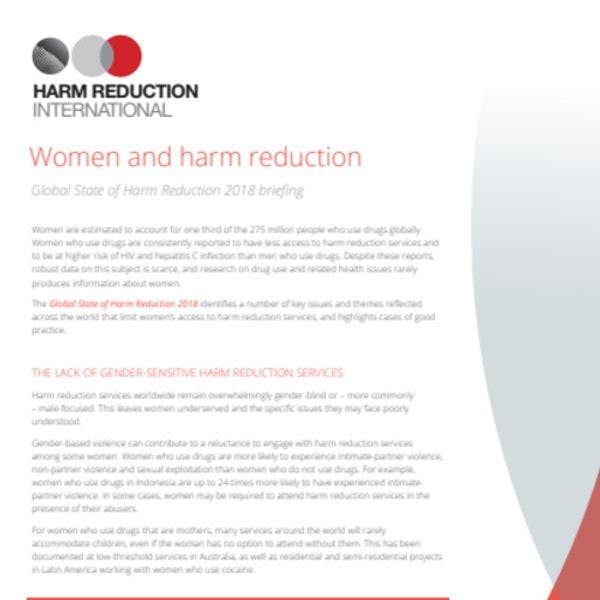CC Jonathon Dickinson
Réduction des risques et femmes
HRI soulève des questions clés concernant les femmes consommatrices des drogues et leur accès aux services de réduction des risques, en soulignant des exemples de bonnes pratiques. Pour en savoir plus, en anglais, veuillez lire les informations ci-dessous.
Women are estimated to account for one third of the 275 million people who use drugs globally. Women who use drugs are consistently reported to have less access to harm reduction services and to be at higher risk of HIV and hepatitis C infection than men who use drugs. Despite these reports, robust data on this subject is scarce, and research on drug use and related health issues rarely produces information about women.
The Global State of Harm Reduction 2018 identifies a number of key issues and themes reflected across the world that limit women’s access to harm reduction services, and highlights cases of good practice. This includes: A lack of gender-sensitive harm reduction services, stigma and discrimination and barriers to harm reduction for women in prison.
Harm reduction services worldwide remain overwhelmingly gender-blind or – more commonly – male-focused. This leaves women underserved and the specific issues they may face poorly understood. Around the world, women who use drugs face double stigma based on both their gender and their drug use. Entrenched patriarchal social norms in many contexts lead to women, and especially women who use drugs, being reluctant to access health care in general. Pregnant women and women with children experience even greater stigma: in some jurisdictions, drug use alone is grounds for the removal of children or prosecution for child abuse.
When women who use drugs are detained, access to harm reduction services is severely lacking. Worldwide, only 54 countries provide opioid substitution therapy in any prison, and only ten provide needle and syringe programmes in any prison. This is compounded by the even greater absence of services in women’s prisons: for example, in Canada, opioid substitution therapy is reportedly implemented to a lesser extent in women’s prisons.
We reccommend that harm reduction services work to provide women-only spaces or dedicated hours for the treatment of women, as well as, working to met the needs of women with children. Women who use drugs should be involved in service design to minimise the impact of stigma. Training health professionals and employing female outreach workers can also support this.
Téléchargements
Sujets
Régions
Profils associés
- Harm Reduction International (HRI)
